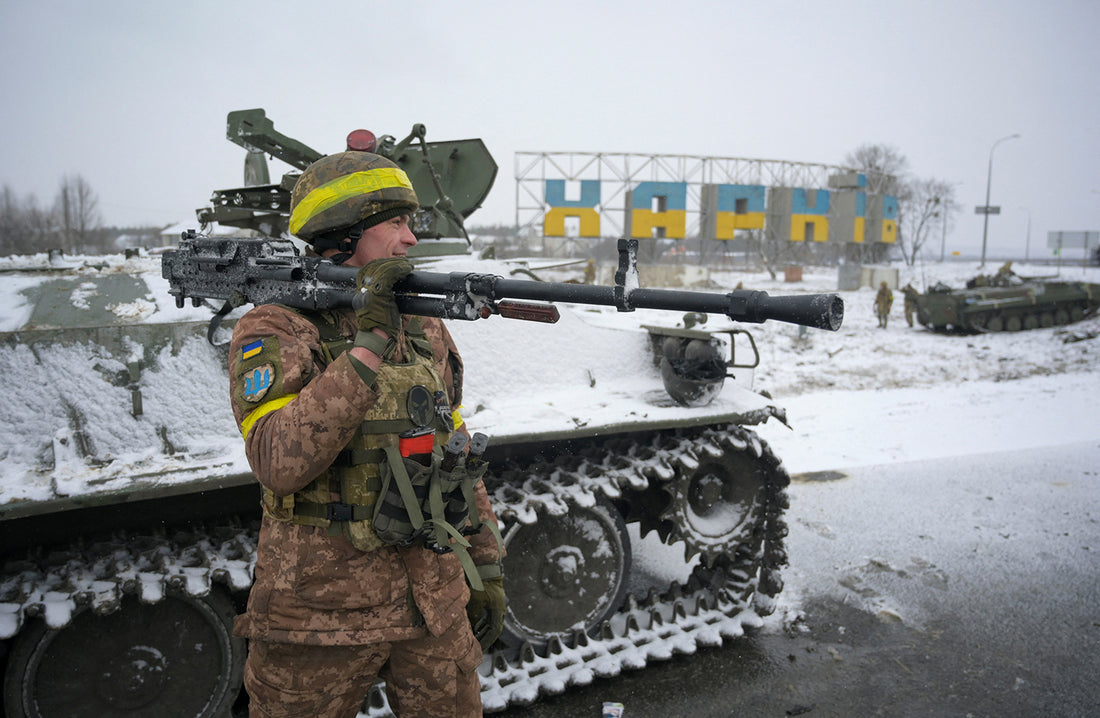
Understanding the Ukrainian War
Understanding the conflict that has increased the risk of a third world war.
The armed conflict in Ukraine first erupted in early 2014 and quickly transitioned to a long stalemate, with regular shelling and skirmishes occurring along the front line that separates Russian- and Ukrainian-controlled border regions in the east. Since Russia launched a full-scale military invasion into Ukraine on February 24, 2022, fighting has caused over one hundred civilian casualties and pushed tens of thousands of Ukrainians to flee to neighboring countries - including Poland, a NATO country where U.S. troops are preparing to offer assistance.
In October 2021, Russia began moving troops and military equipment near its border with Ukraine, reigniting concerns over a potential invasion. Commercial satellite imagery, social media posts, and publicly released intelligence from November and December 2021 showed armor, missiles, and other heavy weaponry moving toward Ukraine with no official explanation. By December, more than one hundred thousand Russian troops were in place near the Russia-Ukraine border and U.S. intelligence officials warned that Russia may be planning an invasion for early 2022.In mid-December 2021, Russia’s foreign ministry issued a set of demands calling for the United States and the North Atlantic Treaty Organization (NATO) to cease any military activity in Eastern Europe and Central Asia, to commit against further NATO expansion toward Russia, and to prevent Ukraine from joining NATO in the future. The United States and other NATO allies rejected these demands and warned Russia they would impose severe economic sanctions if Russia invaded Ukraine. The United States sent additional military assistance to Ukraine, including ammunition, small arms, and other defensive weaponry.
In late February 2022, the United States warned that Russia intended to invade Ukraine, citing Russia’s growing military presence at the Russia-Ukraine border. Russian President Vladimir Putin then ordered troops to Luhansk and Donetsk, separatist regions in Eastern Ukraine partly controlled by Russian-backed separatists, claiming the troops served a “peacekeeping” function. The United States responded by imposing sanctions on the Luhansk and Donetsk regions and the Nord Stream 2 gas pipeline a few days later. On February 24, during a United Nations Security Council meeting to dissuade Russia from attacking Ukraine, Putin announced the beginning of a full-scale land, sea, and air invasion of Ukraine targeting Ukrainian military assets and cities across the country. Biden declared this attack “unprovoked and unjustified” and has since issued severe sanctions in coordination with European allies targeting four of Russia’s largest banks, its oil and gas industry, and U.S. technology exports to the country. The United Nations, G7, EU, and other countries continue to condemn Russian actions and vow to respond.
Background
The crisis in Ukraine began with protests in the capital city of Kyiv in November 2013 against Ukrainian President Viktor Yanukovych’s decision to reject a deal for greater economic integration with the European Union. After a violent crackdown by state security forces unintentionally drew an even greater number of protesters and escalated the conflict, President Yanukovych fled the country in February 2014.
In March 2014, Russian troops took control of Ukraine’s Crimean region, before formally annexing the peninsula after Crimeans voted to join the Russian Federation in a disputed local referendum. Russian President Vladimir Putin cited the need to protect the rights of Russian citizens and Russian speakers in Crimea and southeast Ukraine. The crisis heightened ethnic divisions, and two months later pro-Russian separatists in the Donetsk and Luhansk regions of eastern Ukraine held a referendum to declare independence from Ukraine.
Violence in eastern Ukraine between Russian-backed separatist forces and the Ukrainian military has by conservative estimates killed more than 10,300 people and injured nearly 24,000 since April 2014. Although Moscow has denied its involvement, Ukraine and NATO have reported the buildup of Russian troops and military equipment near Donetsk and Russian cross-border shelling.
In July 2014, the situation in Ukraine escalated into an international crisis and put the United States and the European Union (EU) at odds with Russia when a Malaysian Airlines flight was shot down over Ukrainian airspace, killing all 298 onboard. Dutch air accident investigators concluded in October 2015 that the plane had been downed by a Russian-built surface-to-air missile. In September 2016, investigators said that the missile system was provided by Russia, determining it was moved into eastern Ukraine and then back to Russian territory following the downing of the airplane.
Since February 2015, France, Germany, Russia, and Ukraine have attempted to broker a cessation in violence through the Minsk Accords. The agreement includes provisions for a cease-fire, withdrawal of heavy weaponry, and full Ukrainian government control throughout the conflict zone. However, efforts to reach a diplomatic settlement and satisfactory resolution have been unsuccessful.
In April 2016, NATO announced that the alliance would deploy four battalions to Eastern Europe, rotating troops through Estonia, Latvia, Lithuania, and Poland to deter possible future Russian aggression elsewhere in Europe, particularly in the Baltics. These battalions were joined by two U.S. Army tank brigades, deployed to Poland in September 2017 to further bolster the alliance’s deterrence presence.
Ukraine has been the target of a number of cyberattacks since the conflict started in 2014. In December 2015, more than 225,000 people lost power across Ukraine in an attack, and in December 2016 parts of Kyiv experienced another power blackout following a similar attack targeting a Ukrainian utility company. In June 2017, government and business computer systems in Ukraine were hit by the NotPetya cyberattack; the crippling attack, attributed to Russia, spread to computer systems worldwide and caused billions of dollars in damages.
Security assistance to Ukraine increased further during the Donald Trump administration, alongside continued pressure on Russia over its involvement in eastern Ukraine. In January 2018, the United States imposed new sanctions on twenty-one individuals, including a number of Russian officials, and nine companies linked to the conflict. In March 2018, the State Department approved the sale of anti-tank weapons to Ukraine, the first sale of lethal weaponry since the conflict began. In October 2018, Ukraine joined the United States and seven other North Atlantic Treaty Organization (NATO) countries in a series of large-scale air exercises in western Ukraine. The exercises came after Russia held its annual military exercises in September 2018, the largest since the fall of the Soviet Union.
Concerns
The current conflict has severely strained U.S. - Russia relations and increased the risk of a wider European conflict. Tensions are likely to increase between Russia and neighboring NATO member countries that would likely involve the United States, due to alliance security commitments. Additionally, the conflict in Ukraine will have broader ramifications for future cooperation on critical issues like arms control, cybersecurity, nuclear nonproliferation, energy security, counter-terrorism, and political solutions in Syria, Libya, and elsewhere.
#Zelenskyy #Zelensky #Ukaine #UkranianRefugees #StandWithUkraine #Ukranians #IAmUkraine #FreeUkraine #FightForUkraine





















































